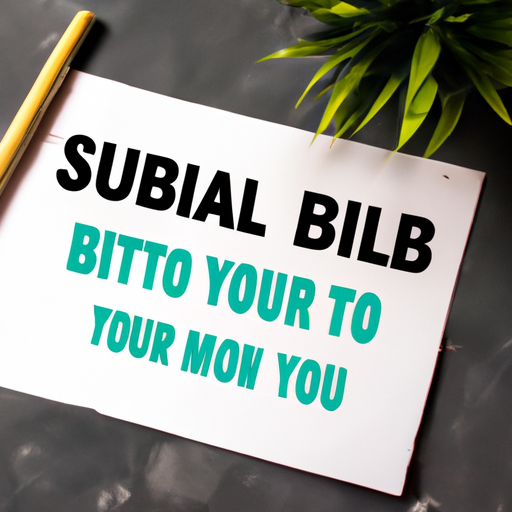Optimal Email Lengths and Formats
I get it, y’all, crafting the perfect email is no picnic. Whether it’s for work or reaching out to that old college buddy, finding that sweet spot between informative and concise can feel like trying to shoot a basketball from half court. Strap in, folks, as we’re going to dive into the nitty-gritty of optimal email length and format.
Size Matters: The Ideal Email Length
Let’s cut to the chase. According to Boomerang, the most effective emails clock in at a breezy 50 to 125 words.
Long enough to express a thought but short enough to make sure the recipient doesn’t doze off halfway through. Keep it tight, folks!
The Three C’s: Clear, Concise, and Courteous
While we’re on the topic of keeping emails short, let’s not forget the importance of clarity.
Be direct, be polite, and most importantly, make sure your point gets across without the reader having to sift through fluff. Just like grandma’s apple pie recipe: simple, sweet, and to the point.
Make it Snappy: Using Bullet Points
Bullet points are your best friends. They’re like popcorn at a football game, small bites that pack a punch.
- They break up large chunks of text.
- Make information easily digestible.
- Let readers scan your email easily.
So, next time you’ve got a lot to say, consider sprinkling in some bullet points. They’re a surefire way to keep your readers’ eyes from glazing over.
Subject Lines: The Cherry on Top
Ever opened an email just because the subject line piqued your interest? That’s the power of a well-crafted subject line. It can take your email from “meh” to ”must-read”.
Remember, the perfect subject line is enticing, informative but not overly long. It’s your email’s billboard. Make it count!
Sign It Off Right
Now let’s talk closings. These aren’t just a throwaway. ‘Best’, ‘Regards’, or ‘Yours Sincerely’ – they offer an extra sprinkle of professionalism without needing a flight of fancy.
The right sign-off sets the tone for every feedback, response, or further communication. Rock those sign-offs right, peeps!
Wrap It Up
So there you have it, folks, the lowdown on optimal email formats and lengths. Go on and tame that Wild West of the Inbox; the email frontier is yours for the taking!
Keep it snappy, clear, and courteous and you’re sure to crank out emails that are as effective as they are enjoyable. Happy emailing, y’all!
Keeping Emails Short: A Call for Clarity
The ability to communicate effectively is crucial, but nowhere more so than in emails. Efficient email communication is like grandma’s apple pie recipe: it should be simple, sweet, and to the point. Be direct with your message, yet polite in delivery. Above all, ensure your point is clear.
Make it Snappy with Bullet Points
When it comes to emails, bullet points are your secret weapon. These small bites can help to communicate large amounts of information effortlessly and efficiently. They:
- Break down big chunks of information into digestible bits.
- Enable easy and quick reading for your audience.
- Present your content in a neat and organized manner.
Therefore, when you’re sending a lengthy email, consider using bullet points to avoid boring your reader.
The Art of Crafting Subject Lines
A good subject line can mean the difference between your email being read and it being ignored. A well-crafted email subject line is not only attention-grabbing but also provides a hint into the content of the email, encouraging the reader to open it. So, make your subject lines enticing and informative but also concise. A great subject line can transform your email from the ordinary to the extraordinary.
The Importance of Email Sign-offs
Just like the closing remarks of a presentation, closing your email correctly is crucial. A good email closing will convey professionalism to your reader. A simple ‘Best’, ‘Regards’ or ‘Yours Sincerely’ can do the trick. Therefore, don’t overlook your email closing; it sets the tone for any follow-up conversations.
Conclusion
With these tips, mastering email communication should be a breeze. Remember to keep your emails short, clear, and tactful, and use elements such as bullet points, effective subject lines, and professional email sign-offs. Happy emailing!
Stay Professional And Polite
Always remember that an email is a business communication tool. Thus, maintaining professionalism is key. Use formal language and steer clear from slang or informal language. Be tactful in your word choice and avoid being too direct or aggressive. Balance being assertive, yet polite in delivery. Above all, ensure your point is clear.
Make it Snappy with Bullet Points
When it comes to emails, bullet points are your secret weapon. These small bites can help to communicate large amounts of information effortlessly and efficiently. They:
- Break down big chunks of information into digestible bits.
- Enable easy and quick reading for your audience.
- Present your content in a neat and organized manner.
Therefore, when you’re sending a lengthy email, consider using bullet points to avoid boring your reader.
The Art of Crafting Subject Lines
A good subject line can mean the difference between your email being read and it being ignored. A well-crafted email subject line is not only attention-grabbing but also provides a hint into the content of the email, encouraging the reader to open it. So, make your subject lines enticing and informative but also concise. A great subject line can transform your email from the ordinary to the extraordinary.
The Importance of Email Sign-offs
Just like the closing remarks of a presentation, closing your email correctly is crucial. A good email closing will convey professionalism to your reader. A simple ‘Best’, ‘Regards’ or ‘Yours Sincerely’ can do the trick. Therefore, don’t overlook your email closing; it sets the tone for any follow-up conversations.
Conclusion
With these tips, mastering email communication should be a breeze. Remember to keep your emails short, clear, and tactful, and use elements such as bullet points, effective subject lines, and professional email sign-offs. Happy emailing!
Email communication is an essential skill in both personal and professional interactions. It has the potential to build narratives, structure conversations, and generate excellent responses if crafted well. However, email writing can be a daunting task if you’re unsure of the appropriate tone, vocabulary, or formatting to use.
Keep it Short and Sweet
Emails should be concise and to the point. Avoid unnecessary explanations or long narratives. The recipient ought to quickly understand the purpose of your email without having to read through a lengthy text. Keep your language simple and straightforward, yet maintain a respectful tone. Focus on being assertive, yet polite in delivery. Above all, ensure your point is clear.
Make it Snappy with Bullet Points
When it comes to emails, bullet points are your secret weapon. These small bites can help to communicate large amounts of information effortlessly and efficiently. They:
- Break down big chunks of information into digestible bits.
- Enable easy and quick reading for your audience.
- Present your content in a neat and organized manner.
Therefore, when you’re sending a lengthy email, consider using bullet points to avoid boring your reader.
The Art of Crafting Subject Lines
A good subject line can mean the difference between your email being read and it being ignored. A well-crafted email subject line is not only attention-grabbing but also provides a hint into the content of the email, encouraging the reader to open it. So, make your subject lines enticing and informative but also concise. A great subject line can transform your email from the ordinary to the extraordinary.
The Importance of Email Sign-offs
Just like the closing remarks of a presentation, closing your email correctly is crucial. A good email closing will convey professionalism to your reader. A simple ‘Best’, ‘Regards’ or ‘Yours Sincerely’ can do the trick. Therefore, don’t overlook your email closing; it sets the tone for any follow-up conversations.
Conclusion
With these tips, mastering email communication should be a breeze. Remember to keep your emails short, clear, and tactful, and use elements such as bullet points, effective subject lines, and professional email sign-offs. Happy emailing!


